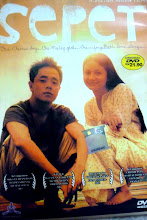You would also have to say that there are some 56 traditional Chinese dresses because there are some 56 tribes in China, each with its own distinctive couture because they are all also Chinese.
But if you want to be honest, then it should be correct to say that the hanfu - the traditional dress of the majority Chinese Han people is the rightful traditional Chinese dress.
Qipao is flattering if you have what it takes to wear it. It cannot be denied that qipao is indeed a beautiful attire.
But qipao is strictly Manchurian in origin. When the Manchus came to power in China (1644-1911) they banned the hanfu.
So, for several hundred years, hanfu was 'lost' to the Chinese who themselves came to consider qipao as their traditional dress.
But really, how could a traditional dress - the hanfu - that has several thousand years of history and that had been worn by the majority Chinese, from emperors to the commoners, not be regarded as the traditional dress of the Chinese people compared to one that was forced upon them by the invader Manchus?
Well, you could if you want to be politically correct. Or more precisely, perverse?
To me, at least, hanfu is an immensely more graceful and beautiful dress that better embodies the spirit and essence of the Chinese people than the qipao.
Hanfu may be cumbersome for the modern age no doubt, but I do wish that it makes a comeback and be worn on certain occasions
It is therefore heartening to note that more and more Chinese people, especially the young, are beginning to realise that they would lose a heritage, and their roots, if they did nothing to reclaim it.
The movement to revive the hanfu first started in China several years ago and it is spreading to other cities all over the world where there are Chinese people. Here in Bolehland, we are not remiss. See video below.
After all, the Japanese kimono and the Korean hanbok were inspired by the hanfu.




No comments:
Post a Comment